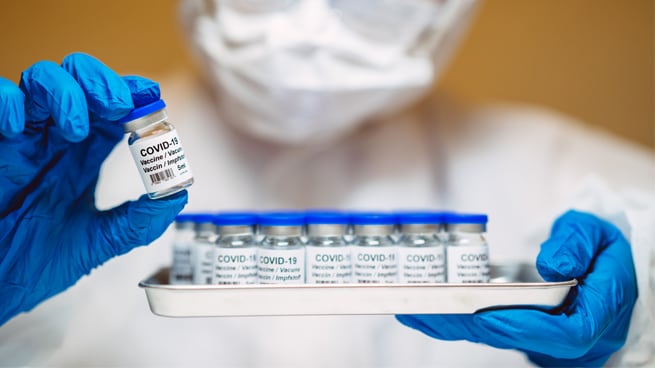
Three challenges and steps to help ensure the medical supply chain is up to the task
COVID-19 vaccines are being developed at a breakneck pace, but a broken supply chain could derail that momentum, stunting the economic recovery and likely increasing the number of lives lost. The millions of vaccines produced on the most advanced platforms will likely mean little if consumers who need them most can’t get them. There are steps manufacturers and distributors can take to help ensure the medical supply chain is up to the task of quickly turning these vaccines into vaccinations.
PwC’s Health Research Institute (HRI) has identified three factors that could influence on-time delivery and vaccination for COVID-19.

Glacial temperatures at historical speed: Creating a nationwide network of mini- Antarcticas
While vaccines typically require similar transport and storage parameters, at least one of the most advanced candidate vaccines being developed to address the COVID-19 pandemic is built with a new nucleic acid-based technology – mRNA – that likely will require ultra-low storage temperatures during transport. With at least one mRNA vaccine expected to require storage at temperatures of –80 degrees Celsius, manufacturers of these vaccines may have to find specialized transport and storage channels that could effectively manage the lower temperatures.
But manufacturers may not have to build these from the ground up. Cell and gene therapies have similar ultra-low temperature requirements for transport and storage. Additionally, the manufacturers of mRNA vaccine candidates have successfully deployed these products to clinical trial sites across the US. Manufacturers can build upon existing cold chain supply frameworks, such as those in place for gene therapies and clinical trial sites, to establish specialized distribution networks for novel vaccine technologies.
Vaccination 2.0: Getting the last mile right could require consumer-centric vaccination models
The vaccination itself is perhaps the most critical step in the last leg of the journey for a vaccine to meet its goal of allaying disease transmission. For COVID-19, the challenges in the last mile could come down to manufacturers’ ability to effectively address shifting consumer care patterns and social determinants of health.
Vaccination is likely to occur in waves as the federal and state governments make decisions about which groups should be highest priority and how the criteria for vaccine recipients are broadened as more doses become available. As the funnel of prioritized individuals widens, consumer preferences could become a major factor to help ensure vaccine uptake and minimize concerns over vaccine hesitancy or pandemic fatigue, the latter of which could make individuals more complacent with the notion that the pandemic is now just a part of their lives.
Advanced analytics: Connecting the dots between distributors, vaccinators and consumers
Advanced analytics underpin the ability of a complex web of stakeholders — manufacturers, distributors, providers, pharmacists, public health officers and others—to deploy vaccines via specialized distribution networks and get them to consumers at the right time and in the right place.
Manufacturers could use existing software tools to help model the supply chain, identifying the most optimal distribution systems and how those could evolve throughout the pandemic. Additionally, they could collaborate with providers, pharmacists and others in the supply chain to share data such as the number of vials shipped, expected delivery dates, any potential delays in real time and other aspects that can inform efficient delivery of vaccines. This could also enable a virtual feedback loop with the vaccinators and consumers to forecast demand and improve just-in-time delivery of vaccines as more data are obtained, including information on where consumers are getting vaccinated, whether they are returning for the booster shot and other inputs to guide efficient distribution.











